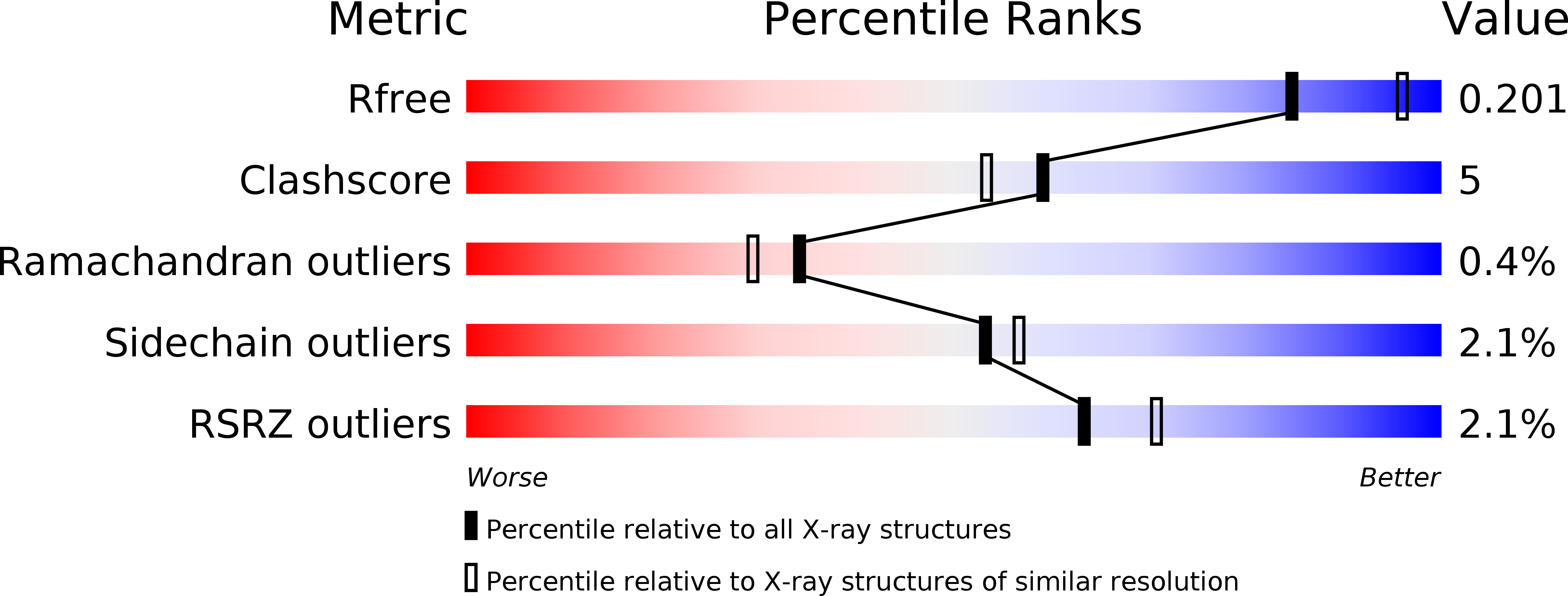
Deposition Date
2015-08-18
Release Date
2016-08-10
Last Version Date
2024-11-06
Entry Detail
PDB ID:
5D9G
Keywords:
Title:
Crystal structure of TIPRL, TOR signaling pathway regulator-like, in complex with peptide
Biological Source:
Source Organism:
Homo sapiens (Taxon ID: 9606)
Host Organism:
Method Details:
Experimental Method:
Resolution:
2.15 Å
R-Value Free:
0.19
R-Value Work:
0.18
R-Value Observed:
0.18
Space Group:
P 65


